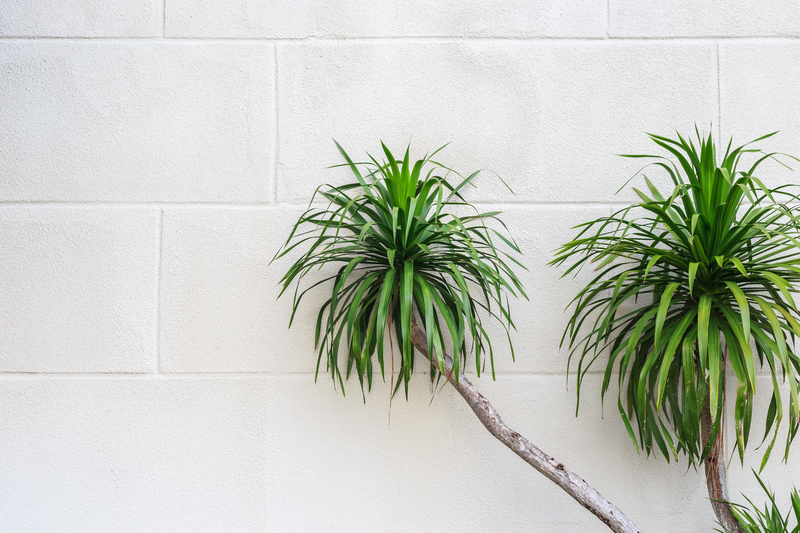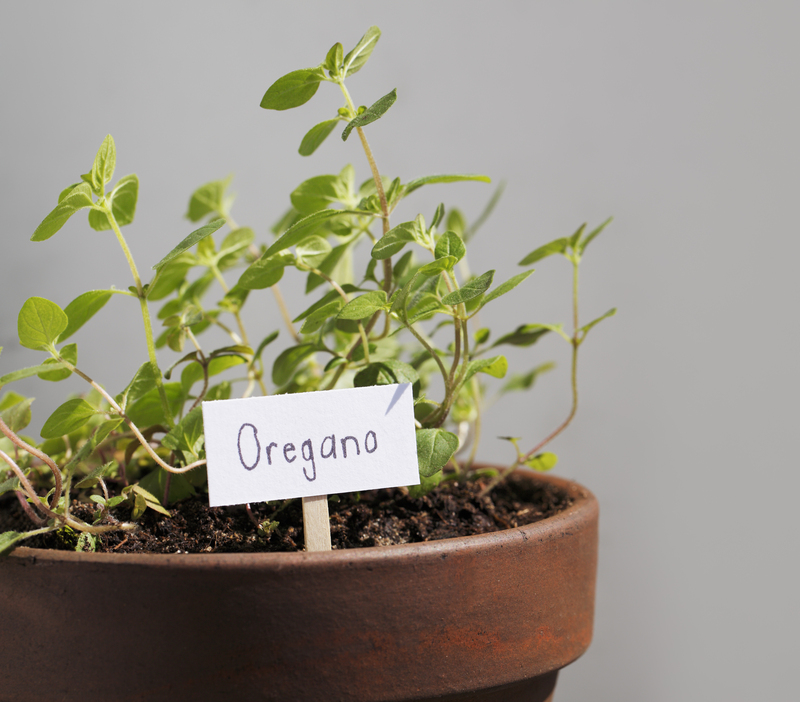Create a Low-Stress Garden with 5 Cost-Effective Ideas
Posted on 20/06/2025
Create a Low-Stress Garden with 5 Cost-Effective Ideas
Gardening brings beauty and tranquility to our lives, but for many, the idea of creating and maintaining a garden can feel overwhelming and expensive. If you're seeking a serene oasis that doesn't demand constant attention or a big budget, you're not alone. This comprehensive guide will show you how to create a low-stress garden with five budget-friendly strategies. Not only will these tips support your well-being, but they are also designed for anyone--beginner or pro--who wants a simple, enjoyable outdoor space.

Why Choose a Low-Stress, Cost-Effective Garden?
Imagine stepping into your backyard and feeling a wave of calm wash over you, rather than a list of chores or costly upgrades. The benefits of a low-maintenance garden are many:
- Reduced time spent on upkeep
- Lower water consumption and utility bills
- Minimal use of expensive fertilizers or chemicals
- Greater resilience to pests and climate shifts
- More time to relax and enjoy the outdoors
With a little creative thinking, low-stress gardening can be both affordable and aesthetically pleasing.
5 Cost-Effective Ideas for a Low-Stress Garden
1. Embrace Native and Drought-Tolerant Plants
One of the most impactful ways to create a stress-free garden is by choosing plants suited to your region. Native plants and drought-tolerant species naturally thrive in your local soil and climate, making them low-maintenance and resilient.
- Less Watering: Adapted to your area, these plants require less supplemental watering, saving you time and money.
- Minimal Fertilizing: Native plants generally need little to no commercial fertilizer, reducing ongoing costs.
- Lower Pest Issues: Natural resistance to local pests means fewer interventions and stress.
Tip: Visit a local nursery or cooperative extension to learn which native or drought-tolerant varieties will flourish in your area. Examples include lavender, coneflower, black-eyed Susan, salvia, and ornamental grasses.
2. Install Mulch for Healthy, Low-Upkeep Beds
Mulch is a gardener's secret weapon. Not only does it keep beds tidy, but it also drastically reduces weeds and moisture loss.
- Weed Suppression: By blocking sunlight, mulch prevents most weeds from sprouting, lightening your workload.
- Moisture Retention: Mulch slows evaporation, meaning you water less--an immediate cost savings.
- Soil Health: Organic mulches, like wood chips or shredded leaves, decompose and enrich the soil over time.
Mulching is highly cost-effective; you can often source organic mulch for free from municipal brush recycling or your own yard debris. Apply a 2-3 inch layer for best results.
3. Simplify Your Layout with Defined Zones
Gardens that are easy to care for often share one thing: simplicity. Streamline your outdoor space by creating defined zones or sections for different activities and purposes.
- Reduce Lawn Area: Lawns require frequent mowing and fertilizing. Shrink your turf by adding border beds or ground covers.
- Hardscape Elements: Paths made from gravel, stepping stones, or reclaimed pavers are low-maintenance and affordable.
- Grouping Plants: Cluster similar plants together for easier care, especially those with the same water and light needs.
By choosing simple shapes (like circles, rectangles, or curves) and steering clear of intricate designs, you can save both time and money. Plus, clear pathways and zones invite a feeling of calm and order throughout your serene garden.
4. Make Use of Perennials for Long-Term Savings
Annual flowers may provide instant color, but they require replanting every year. Instead, focus on hardy perennials that return year after year with minimal care.
- Cost Savings: Buy once, enjoy for years. Many perennials multiply, allowing you to fill beds gradually.
- Low Upkeep: Perennials generally need less fertilizer and are adapted to prevailing conditions.
- Easy Propagation: Divide mature plants to create new ones for free, sharing excess with neighbors or expanding on a budget.
Popular, easy-care perennials for a low-maintenance landscape include hostas, daylilies, asters, sedum, and coreopsis. Their varied foliage and seasonal blooms ensure interest and texture throughout the growing season with little effort on your part.
5. Use Smart Watering Solutions
Watering can be one of the most time-consuming (and expensive) chores in the garden. A simple irrigation system or a thoughtful approach can save you both hassle and money.
- Drip Irrigation: These systems deliver water directly to roots, reducing waste and the need for frequent watering. Kits are affordable and easy to install yourself.
- Rain Barrels: Collecting rainwater is eco-friendly and cost-effective. You can use the water for your garden during dry spells, reducing reliance on city systems.
- Water at the Right Time: Early morning is best, as it reduces evaporation and keeps plants healthier--another easy habit for a stress-free gardening experience.
For small spaces, self-watering planters are also a fantastic investment. These containers hold reservoirs in the base, gradually providing consistent moisture to roots with minimal intervention.
Extra Tips for a Truly Stress-Free, Cost-Saving Garden
If you're committed to a low-stress, affordable garden, here are a few extra strategies that blend beauty, function, and budget-efficiency:
- Minimize Tools: A few multi-purpose, quality tools last longer and save storage space.
- Choose Low-Maintenance Ground Covers: Options like clover, creeping thyme, or vinca minor reduce mowing and weeding needs.
- Go Vertical: Use walls or trellises for climbing plants, which are easy to manage and maximize small spaces.
- Incorporate Seating: Even a simple bench or upcycled chair encourages relaxation--and reminds you to enjoy your work!
- Embrace Imperfection: A few wild patches support pollinators and add a natural touch--less micromanaging, more harmony.
Enjoy Your Low-Stress, Budget-Friendly Sanctuary
Transforming your outdoor space into a tranquil, low-maintenance garden is well within reach--financially and time-wise. By embracing native plants, mulching, using perennials, installing simple watering solutions, and creating clear zones, you're investing in both your property's value and your personal well-being.
Remember: The purpose of a low-stress garden is to offer peace and pleasure, not pressure. With these strategies, you're not just saving money; you're cultivating a sanctuary where relaxation and beauty flourish every season.

Frequently Asked Questions: Crafting a Hassle-Free, Inexpensive Garden
What are the biggest mistakes to avoid when designing a low-maintenance garden?
Overcomplicating your layout, using too many high-maintenance plants, and underestimating the importance of soil preparation can create unnecessary work. Stick with native or drought-tolerant plants, mulch thoroughly, and plan easy-care zones.
How can I make my existing garden less stressful and more cost-effective?
Start small! Replace some lawn with mulch or ground cover, add a few perennials, and invest in a basic drip irrigation kit. Gradually phase out high-maintenance plants in favor of those that suit your local conditions.
Can a stress-free garden still look attractive and diverse?
Absolutely! Native and drought-tolerant plants offer a wide range of colors, forms, and textures. Layer perennials, shrubs, and ground covers for visual interest. If you love annuals, use them selectively in containers or focal points.
Is it possible to create a low-budget garden in a very small space?
Yes! Use vertical gardening techniques, compact perennials, and self-watering pots. Creating defined seating and planting areas delivers order and calm, even in tiny urban yards or balconies.
Conclusion: Reap the Rewards of a Low-Stress, Cost-Effective Garden
By incorporating these five cost-effective gardening ideas, you'll create a sanctuary that soothes your senses and your budget. Gardening shouldn't be a source of anxiety--it should bring you joy, peace, and a deep sense of accomplishment.
Start today and enjoy the simple pleasures of a low-stress garden--a beautiful, lasting gift to yourself and your environment.



